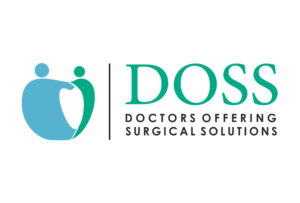Treatment Options for Hernia
BlogIn our previous articles, we discussed what a hernia is and how to diagnose one. Now, we will delve into the various treatment options for hernias. Understanding the available treatments can help patients and their healthcare providers choose the best course of action to address this common medical condition.
The Importance of Mesh in Hernia Treatment
In recent years, surgical mesh has become crucial to hernia treatment. As per the latest guidelines for hernia surgery, mesh is often considered an essential component of the procedure, except in specific circumstances where its use may be contraindicated.
Various types of mesh are available to suit different types of hernias and surgical approaches.
Methods for Fixing Mesh in Hernia Treatment
Open Surgery: The traditional method of hernia repair, also known as open surgery, involves making a small incision near the hernia site and manually fixing the mesh in place. This approach has been used for decades and continues to be a viable option for hernia repair.
Laparoscopic Surgery with 3D Mesh: A more modern alternative to open surgery is laparoscopic surgery, which utilizes a scope and specialized instruments to fix the mesh in place. This method often employs a 3D mesh designed to fit the patient’s anatomy more accurately.
Related Blog- How to Diagnose Hernia?
Comparing Open Surgery and Laparoscopic Surgery
There are notable differences between open surgery and laparoscopic surgery when it comes to hernia repair:
Recovery time: Open surgery generally has a longer recovery time than laparoscopic surgery. This is due to the procedure’s larger incision and more invasive nature.
Pain: Patients who undergo open surgery tend to experience more pain than laparoscopic surgery. This is because laparoscopic surgery involves smaller incisions, which cause less trauma to the surrounding tissues.
Hospital stay: Laparoscopic surgery typically results in a shorter hospital stay than open surgery. Patients undergoing laparoscopic hernia repair can often return home within a few days.
Choosing the Right Treatment for the Patient
Ultimately, deciding which treatment option best suits a particular patient lies with the surgeon and the patient. The surgeon will discuss the pros and cons of open and laparoscopic surgery with the patient before finalizing the treatment plan.
Factors such as the patient’s overall health, medical history, and anesthesia fitness will be considered when making this decision.
Wrapping Up
In conclusion, hernia treatment has evolved significantly over the years, with mesh and laparoscopic surgery becoming increasingly popular.
Both open surgery and laparoscopic surgery have their benefits and limitations, and the choice of treatment depends on the individual patient’s needs and circumstances.
By understanding the available options and discussing them with a qualified surgeon, patients can make informed decisions about their hernia treatment and work towards a successful outcome.


 +919011100010
+919011100010 


